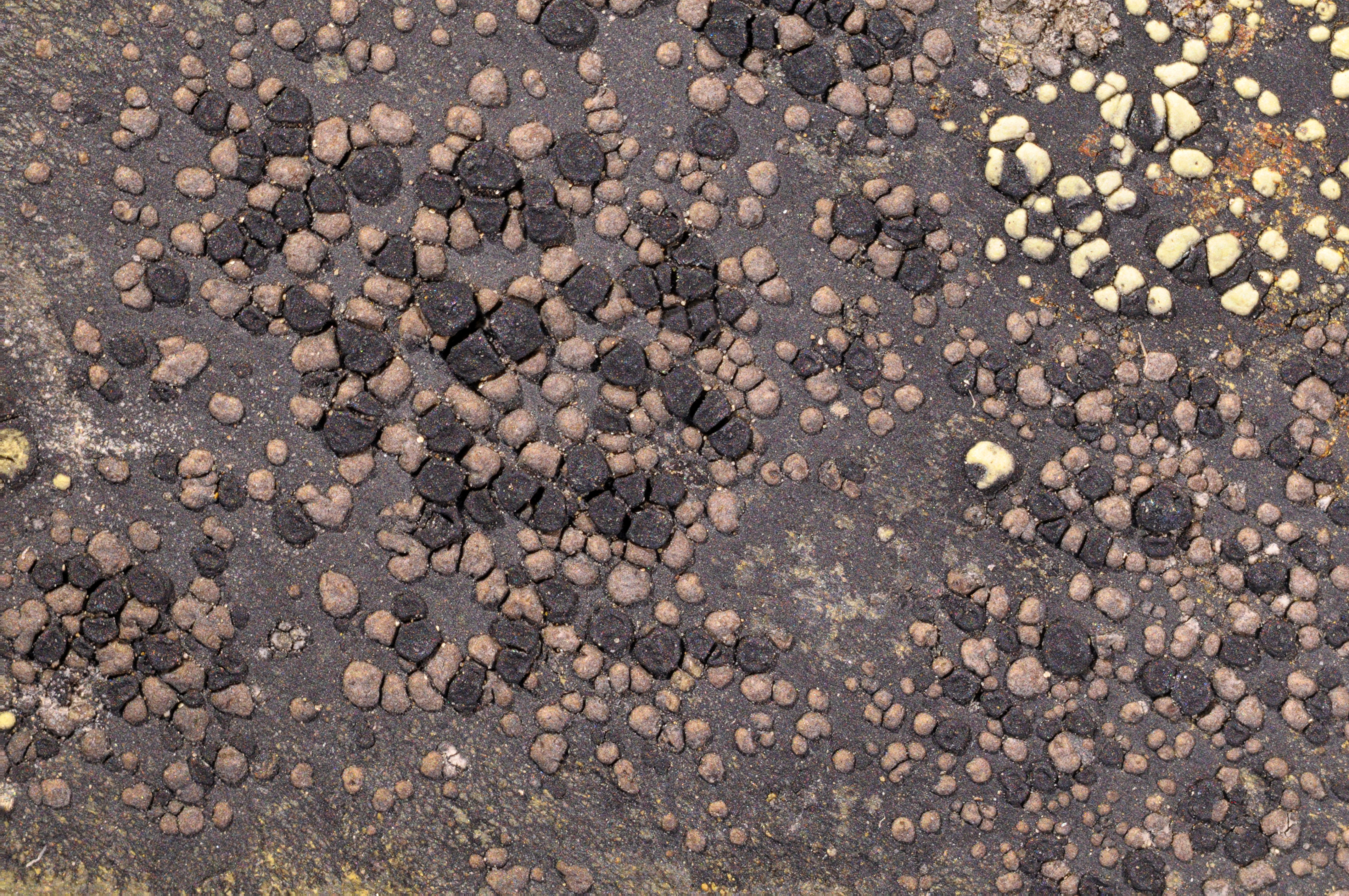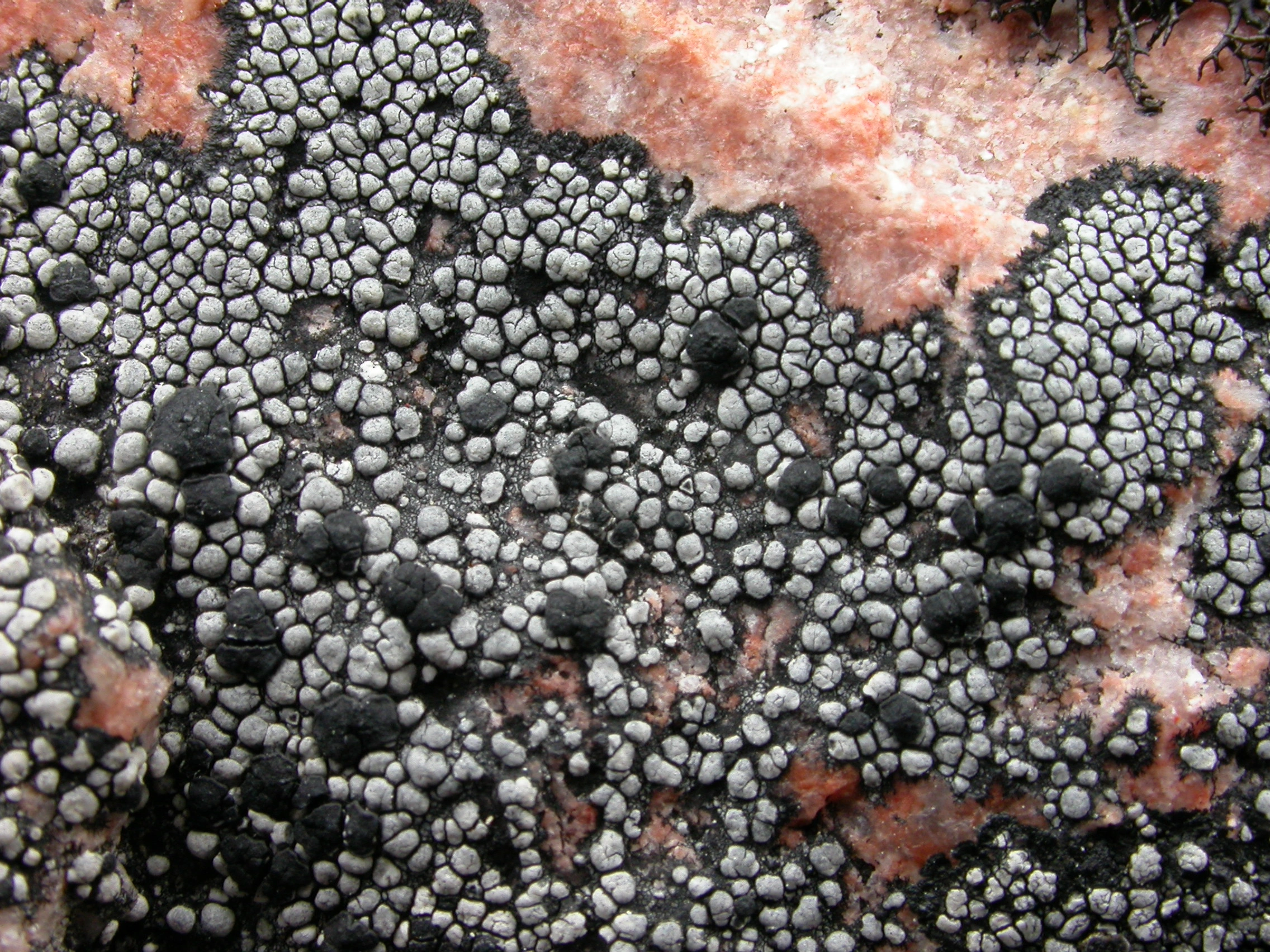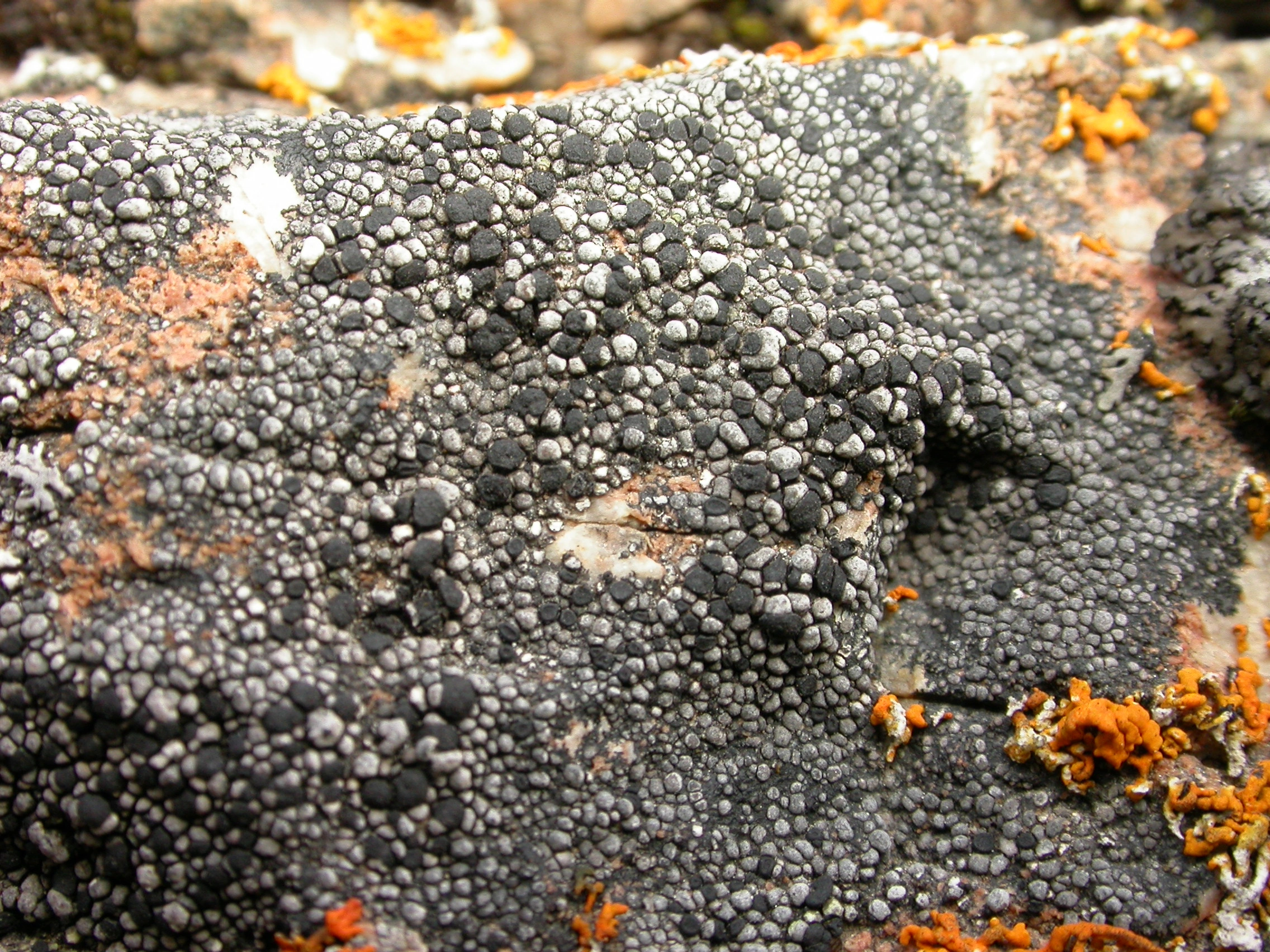Rhizocarpon grande
- Innhold
- Morphology
- Chemistry
- Habitat
- Comment
- Look-alikes
Morphology
Thallus areolate, up to 10 cm diam.; hypothallus well developed, black; areolae up to 0.8 mm diam., medium brown to dark brown, usually with a grey tinge, dull, scattered to contiguous, more or less orbicular, convex to hemispherical; medulla KI+ slowly faintly violet. – Apothecia up to 1 mm diam., black, epruinose, more or less orbicular, plane and narrowly marginate when young, becoming strongly convex and immarginate; excipulum dark brown in the rim, pale brown to colourless in the inner part, usually containing crystals (brown pigment K– or K+ faintly red, crystals C+ red); hypothecium brown, K–; hymenium colourless; epihymenium dark brown, containing crystals dissolving in K (C+ red), K– or K+ faintly red; ascospores 8 per ascus, eumuriform, soon becoming dark green or brown, 24–48 × 11–16 µm. – Conidiomata not seen.
Chemistry
Gyrophoric acid, sometimes also barbatic and/or traces of stictic and norstictic acid; spot tests: medulla C+ red, PD–, K– or sometimes PD+ orange, K+ yellow.
Habitat
On siliceous rock, common both in the lowlands and in the mountains.
Comment
The species differs from R. eupetraeum in having somewhat smaller, more scattered and brownish areolae and in the chemistry. Rhizocarpon geminatum is morphologically similar, but contains only two, much larger spores in the ascus.


